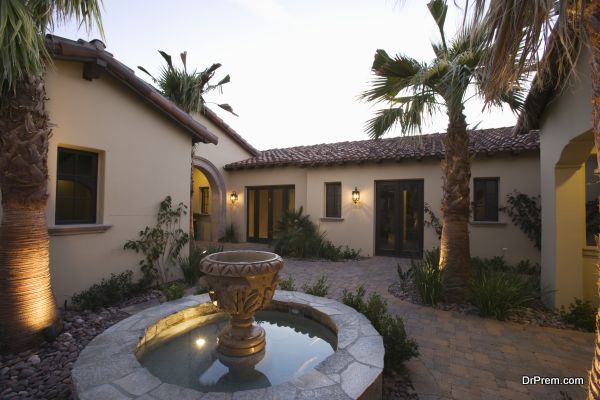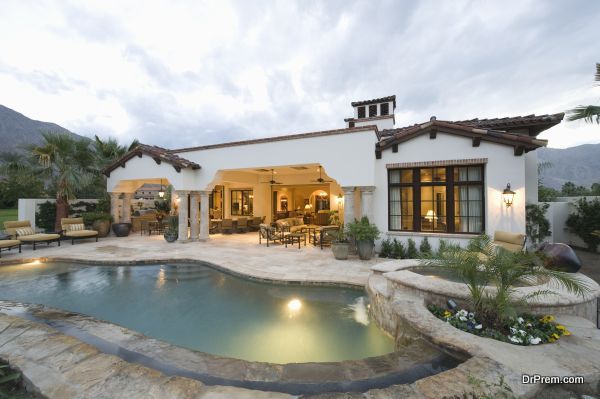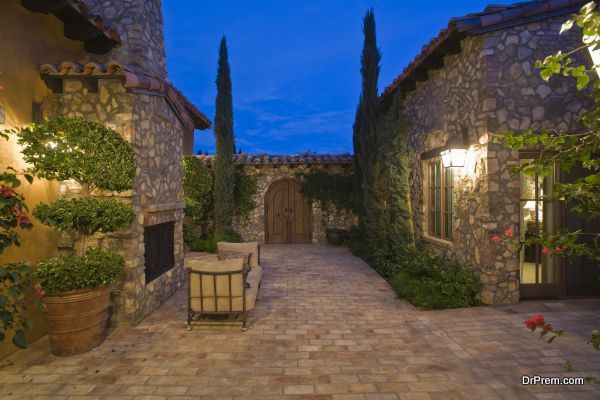When it comes to making an investment in outdoor lighting, you generally have two options to choose from. Light emitting diodes (LEDs) or compact fluorescents (CFLs) are the most common choices consumers make when purchasing lighting for outdoor space.
However, choosing between either LED or fluorescent lighting is not always an easy task. Information on this topic can often be both confusing and contradictory, which is why we’ve outlined the most crucial differences between fluorescent and LED lighting in this article.
Why do you need outdoor lighting?

If your business operates outdoors, having the proper lighting is crucial. Our work doesn’t stop just because the sun’s gone down, so having immediate lighting allows you continue to deliver for your customers even at night.
Alongside this, outdoor lighting can also be implemented for practical reasons such as for security or safety. PIR (Passive Infrared) sensor lights are a good investment for those looking to track movement outside their property. The sensors can be adjusted to detect movement from a certain range, and when the sensor detects something, it will respond by triggering the light.
Other practical purposes include lighting the way in an emergency. This LED Site light has an emergency mode, which means that you and your colleagues can remain safe and abide by health and safety laws wherever you’re working – inside or out.
Energy Usage
If you are conscious about saving energy, your best option would be to go with LED over fluorescent lights. On average, a compact fluorescent bulb will use 13-15 watts per unit of light generated. When compared to the output of an LED bulb, which is 6-8 watts per unit of light generated, it’s clear that a fluorescent bulb is not the most energy-efficient option available to you.
There are other areas in which LED bulbs are more efficient for energy consumption than their fluorescent counterparts. For example, the average lifespan of an LED bulb is 50,000 hours compared to the fluorescent’s 8,000 hours. This, along with the annual operating cost of running LED bulbs being significantly cheaper than fluorescent bulbs, makes LED lighting the best choice for those looking to make the best investment in the long-term.
Contents of Fluorescent Bulbs

The contents of fluorescent bulbs may be enough of a reason alone to discourage people from using them for outdoor lighting. Most fluorescent bulbs contain around 4mg of mercury, a liquid metal that can be very toxic to both humans and the environment.
The most common way of being exposed to the mercury contained within a fluorescent bulb is when a bulb is smashed. This is when the liquid mercury could spill out, forming into little metallic beads that could potentially roll a short distance away from where the bulb was smashed.
While 4mg of mercury is not considered a highly-toxic amount, breathing in mercury vapour will lead to the substance entering the bloodstream.
Weather and Temperature Proof
When buying outdoor lighting, you’ll want to make sure that your purchase can still function even during extreme climates. The issue with fluorescent lighting in this regard is that they won’t always work in cold temperatures, as they are powered by generating heat.
Cold temperature will often lead to a slight delay for fluorescent bulbs if switched on in the cold. LED lighting however is much more durable in harsh environments, especially if the fittings are non-corrosive.
As a business owner, you’ll know that outdoor commercial lighting is crucial if you work outside. Hopefully this post can help you decide which type of outdoor lighting is best for you.
Article Submitted By Community Writer




